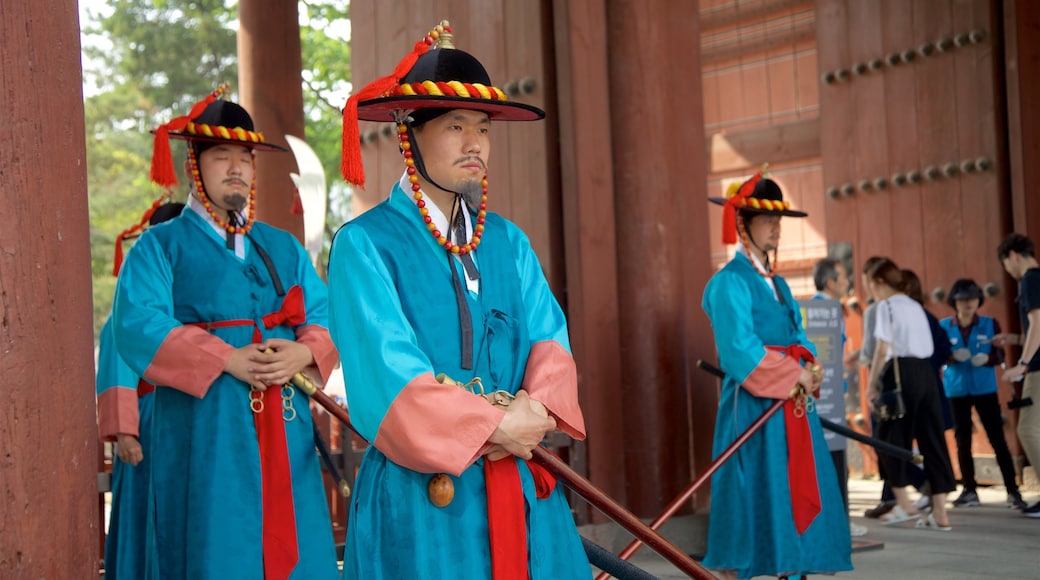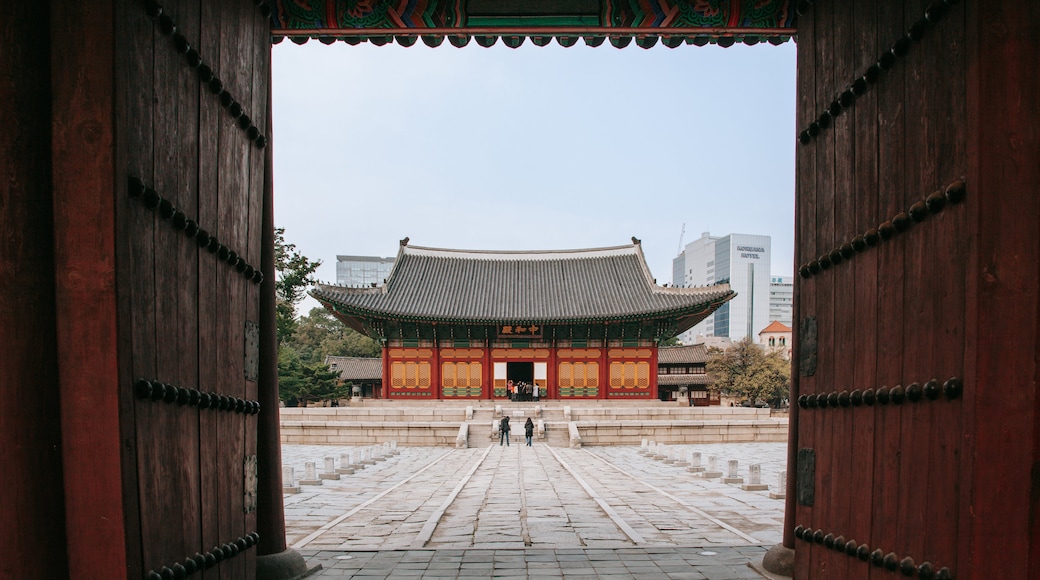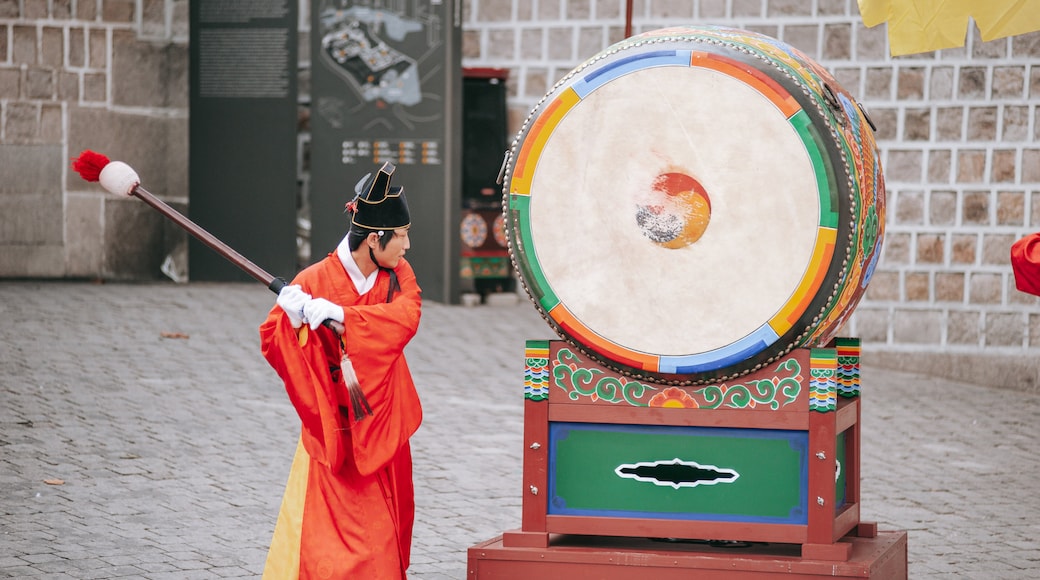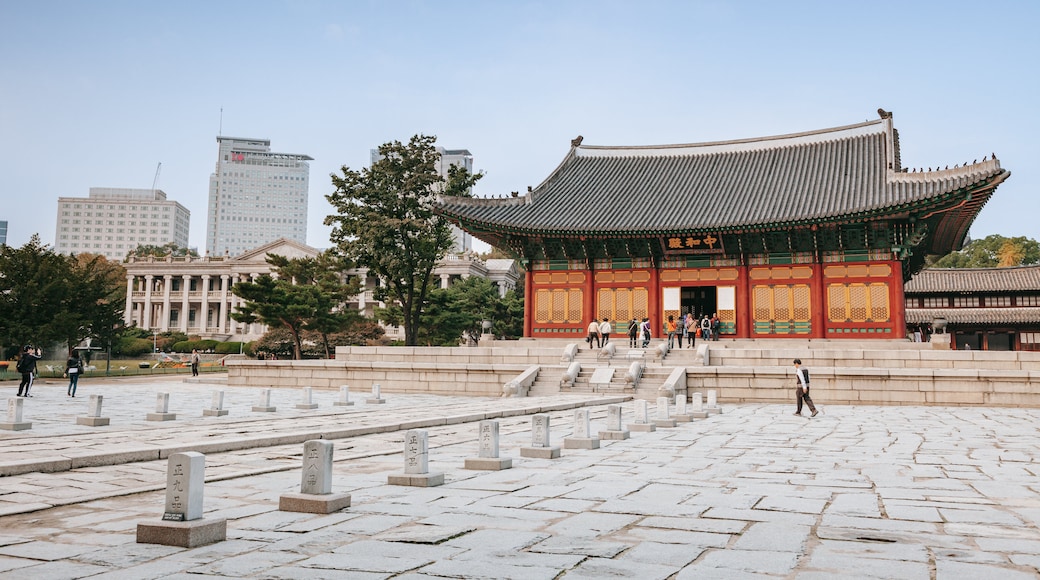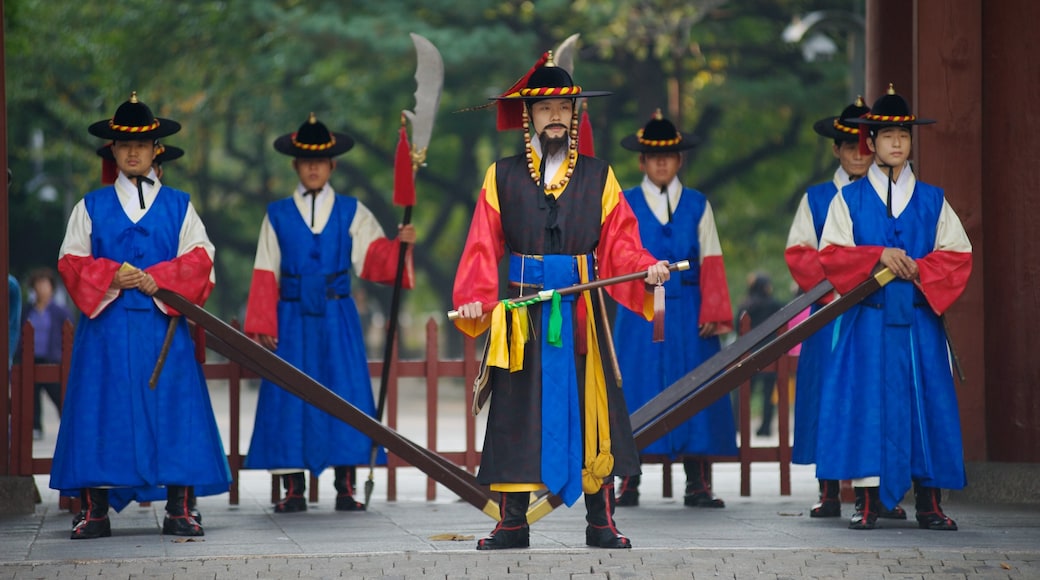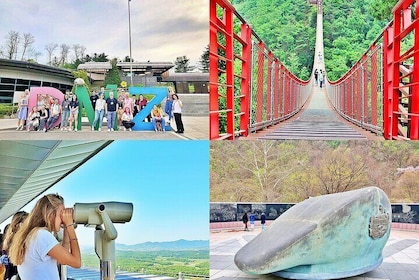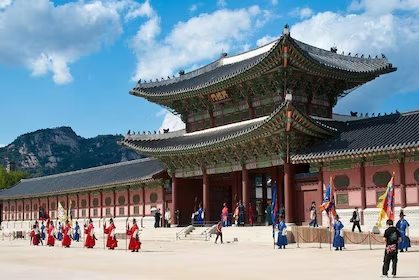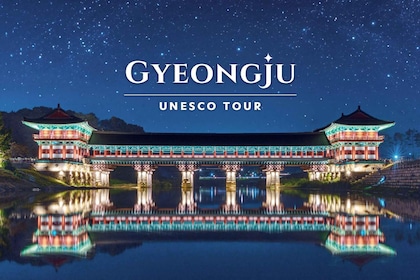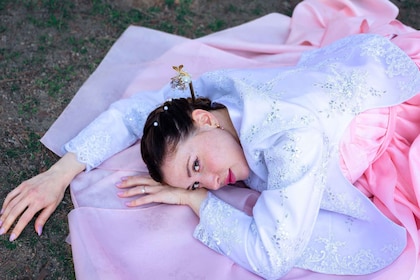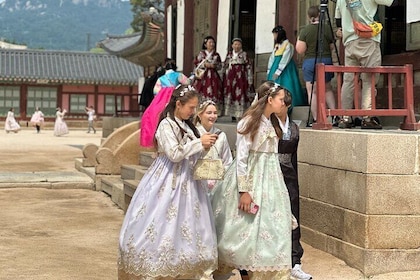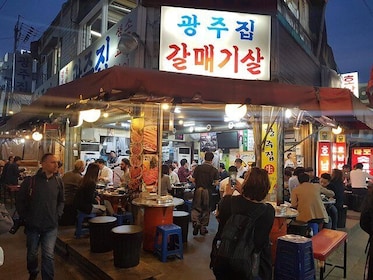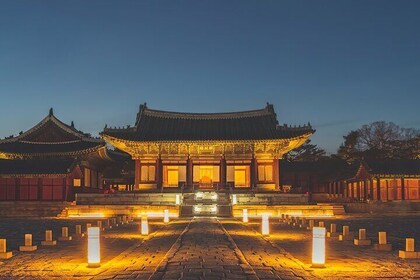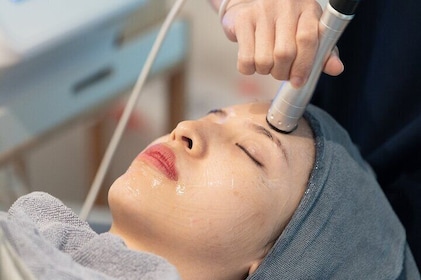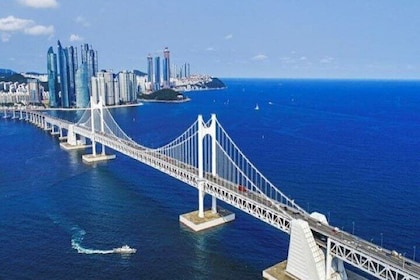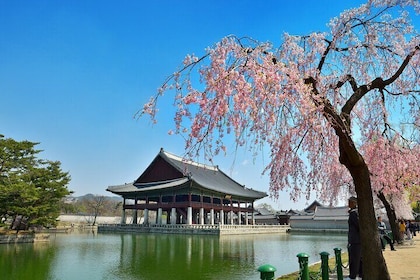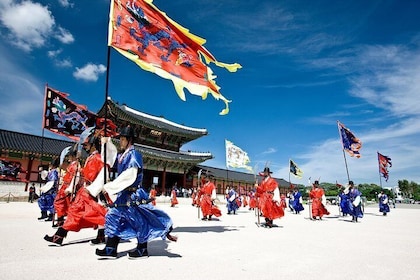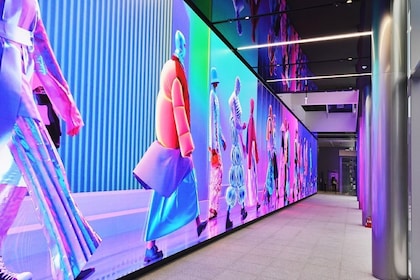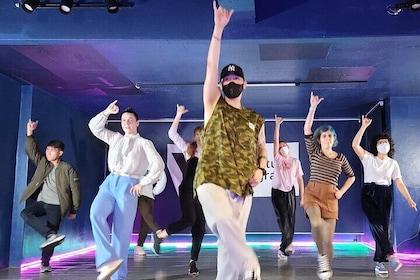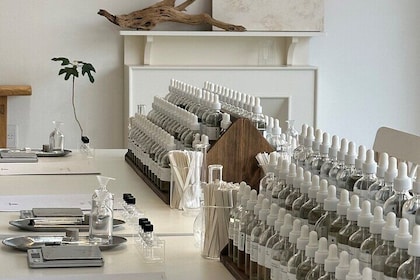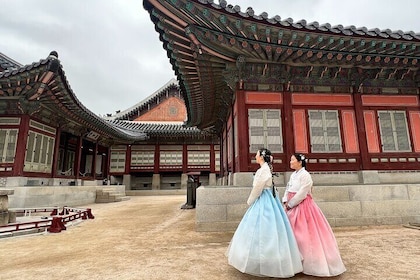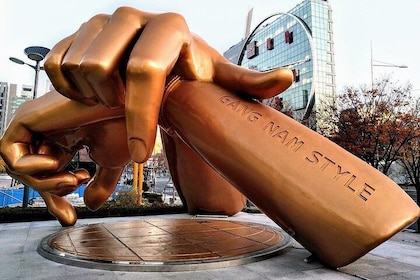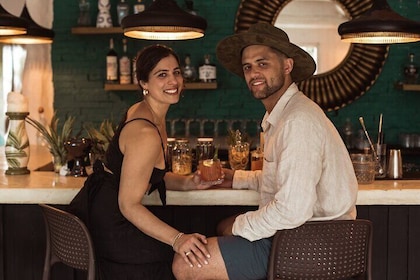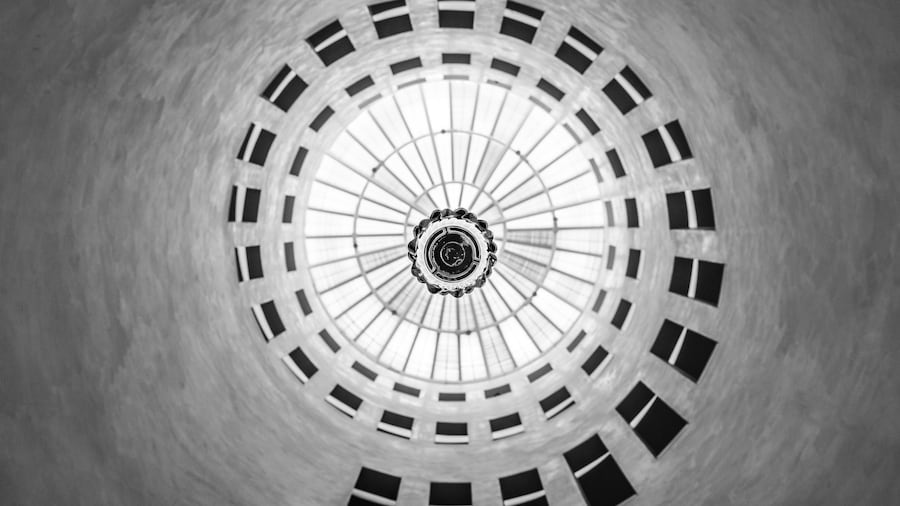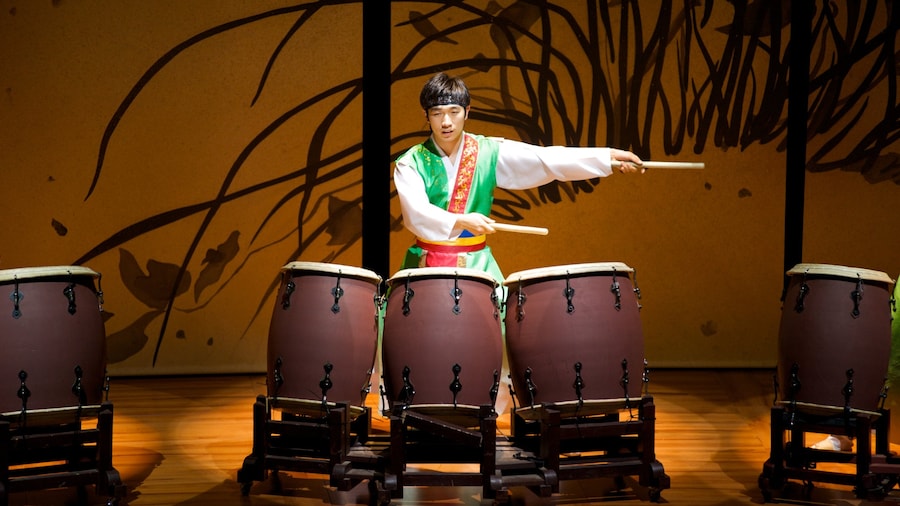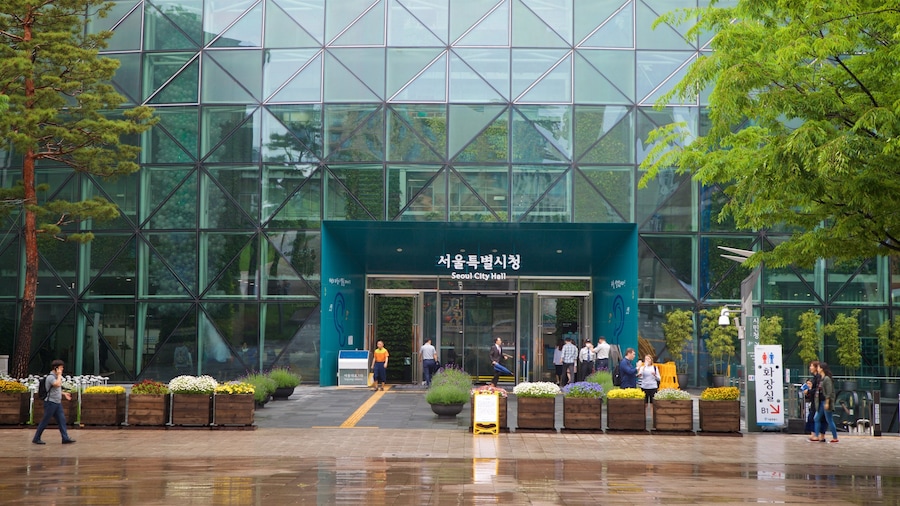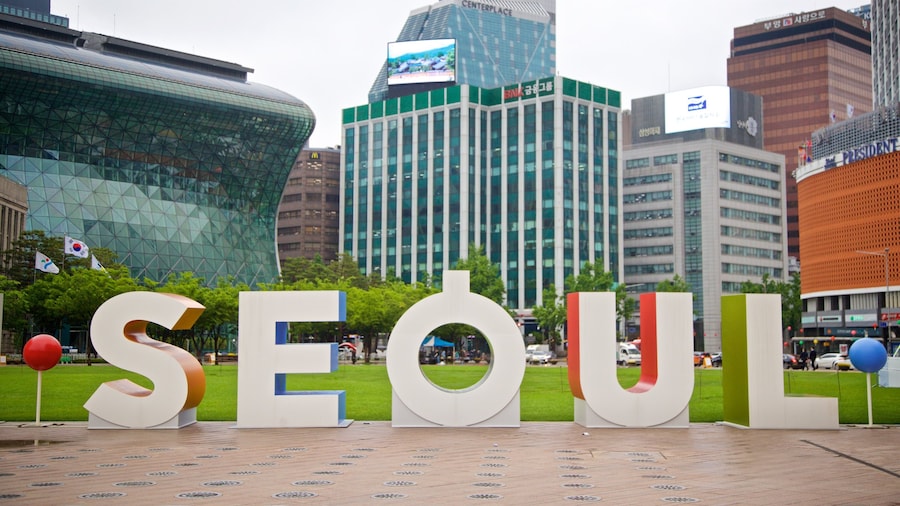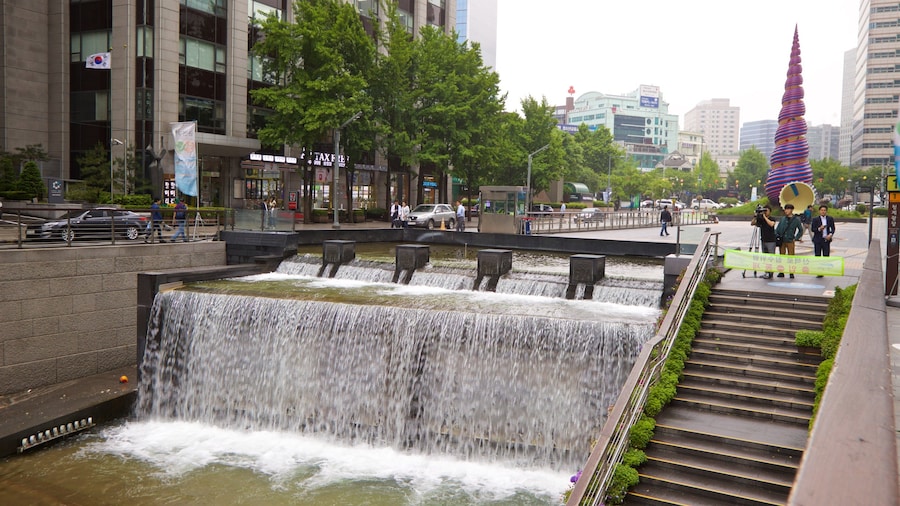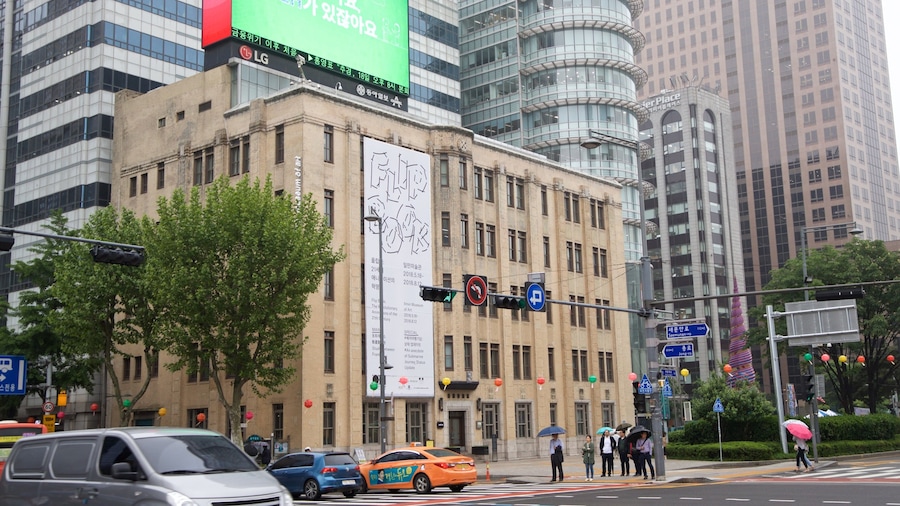The smallest of Seoul’s Five Grand Palaces is renowned for its mixture of western and eastern architecture.
Deoksugung Palace features stately architecture and exhibits featuring national treasure and art.
The palace was first built on this site by the Joseon Dynasty in the 15th century. As with Seoul’s other Grand Palaces, Deoksugung has been the victim of much destruction over the years, notably during Japanese occupation in the early 20th century. The palace was the only one of Seoul’s Five Grand Palaces to survive the Japanese invasion of 1592. Today the complex is around a third of its original size, although there are modern additions such as the National Museum of Art.
Enter the walled palace complex across the Geumcheon Bridge, which was once used to transport royal carriages. As you continue around the grounds, you’ll come across Jeukjodang and the Junmyeongdang building, the simple yet beautiful royal living quarters. The Borugak Jaguwongnu is a water clock that was made in 1536 and, although no longer functioning, is still a notable piece of surviving history.
The two Western-style buildings to look out for are Jeonggwanheon and Seokjojeon. The former was built in 1900, and was where the Emperor Gojong allegedly liked to drink his beloved coffee. Seokjojeon was designed by a British architect. The building was completed in 1910, and now houses an excellent exhibition on the palace’s treasures.
A Deoksugung Palace highlight is the Junghwajeon. This is a grand hall where leaders of the Great Korean Empire once met to discuss important matters. The interior is particularly striking, with its centerpiece of two golden dragons on the ceiling. These mirror the dragons on the canopy outside. Junghwajeon is not always open to the public, so check ahead. Free English guided tours of Deoksugung Palace are conducted daily. It’s advisable to book one of these tours to get the most out of the palace, as there’s a lot to take in. You can buy an integrated ticket to Deoksugung, which also gives you access to Changdeokgung, Changgyeonggung and Gyeongbokgung palaces, and Jongmyo Shrine.
Deoksugung Palace is open daily except on Mondays and public holidays. To get there, take the subway to City Hall.
